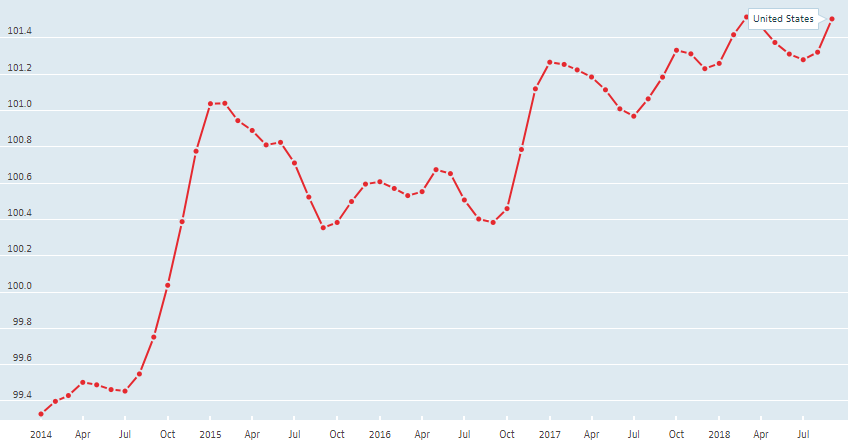I hate the Cheesecake Factory. The food is good, but everything else is terrible. The long wait times are legendary. Prices are high and the plates are piled with way too much food, so I always overeat and regret it later. But worst of all is the menu with over 200 options. I want to enjoy my meal, not read an overwhelming food novel, followed by discussion and deliberation just to narrow it down to a couple of pages.
We’ve all felt overwhelmed. It can happen anywhere. In the grocery store, buying clothes, choosing a college or deciding whom do date. One of the wonderful things about modern society is that there are so many choices for everything. We’re easily connected to millions of products, opportunities, experiences and people. But how can we possibly be expected to choose just one? Maybe less is actually more.
Has something like this ever happened to you? You go into a clothing store to browse around. There are so many clothes that you like, but you can’t decide. Instead of picking one and being happy with it, you say to yourself, “screw it!” and walk out empty-handed.
If so, then you’ve been a victim of the Paradox of Choice. And it turns out you’re not alone. It happens to nearly everyone and it’s something retailers worry about a lot.
If you own that business and people are walking out without buying anything, that has real life effects for you. Consumer psychology can truly help or hurt your business, which is why it’s studied so much by researchers. It’s why the isles at Target are so wide, why the milk is always at the back of the grocery store and the gum is at the checkout counter. It’s why the price of inexpensive items always end in “$0.99,” but the price of luxury items don’t.

Consumer Psychology and the bottom line
Human behavior is studied in commerce because how we think makes a difference to whether we buy something. This in turn affects the entire global economy.
Consumer Confidence Index
Let’s first look at the macro environment. Often in the financial press we hear about the “leading indicators.” These are stats that are designed to give us an idea of where the economy is headed. One such indicator is the Consumer Confidence Index. We hear it most in the months leading up to the end of year holiday shopping season. Retailers use it to try to estimate sales volume, since their entire year depends on the last month, with holiday sales accounting for up to 30% of the entire year’s revenue. 1
The CCI is an indicator that businesses take very seriously. In fact, nearly half of owners of small to medium-sized businesses say it’s the top metric affecting their business, 2 which may explain why Christmas advertisements seems to start earlier every year.
The interesting thing about this metric is it not a metric measuring how much people actually spend. It measures how they feel. It’s a measurement of sentiment, not activity.
AS the OECD puts it, the “indicator provides an indication of future developments of households’ consumption and saving, based on answers regarding their expected financial situation, their sentiment about the general economic situation, unemployment and capability of savings.3. In other words, it’s how optimistic or pessimistic consumers are about the future of the economy.
When people are optimistic, they tend to spend more, especially during the holidays. Each year companies offer us more and more options of what to buy, whether we need it or not. There’s something for every occasion, which is wonderful for retailers and for us. Or is it?

The paradox of choice (When less is more)
Capitalism gives us all these choices as companies cater to the needs and wants of consumer demand (or perceived demand). This overwhelm of product may be uniquely American in some way 4. Compare a grocery store in the U.S. with one in other parts of the world and you’ll notice in the U.S. there are 50 different types of everything. Different flavors, brands, sizes, etc. Elsewhere in the world, there may be fewer choices.
To what degree you get overwhelmed by all the choices may depend in part to how you view decision-making. In the 1950’s Nobel Prize winning American economist, Herbert A. Simon coined the terms, maximizer and satificer to help explain the process.
Maximizers vs. Satificers
A maximizer is someone who needs to see all the choices, do all the research and make sure all the bases are covered before making a decision. If a maximizer is shopping for a car, she needs to visit every car lot and test drive a lot of cars. She’s afraid she won’t get the best one, so she’s very thorough in her research. Exhaustively thorough. The more options available, the more exhausting and overwhelming it can become. Being a perfectionist can be a lot of work.
A satisficer 5,[A portmanteau is a blending of two words, like Motel and Brunch.[/note] is quite different. The satisficer knows what she wants and as soon as she finds what fits the bill, she’s done looking. She may know she wants a husband who has a good job, is attractive to her and likes dogs. When she meets that guy, she’s ready to go. She doesn’t feel the need to keep dating around to see what else is out there. Satisficers do not suffer from Bigger, Better Syndrome. Once they find what they want, they’re ready to move forward, even if it may not be the best option in the universe. This kind of decision maker isn’t afraid of missing out, she’s satisfied that her needs are met.
Simon concluded that the best maximizing strategy is actually that of the satisficer because it takes the least amount of time and causes the least stress and overwhelm.
The Jam Experiment
The idea behind the paradox of choice began with jam. In 2000, psychologists Sheena Iyengar and Mark Lepper published a surprising study. In the study, shoppers on the first day were presented with a table of 24 kinds of jam. On the second day, the table only had 6 kinds of jam. The table with more jams attracted the most attention, but what was surprising is that there were more sales on the second day by a factor of ten! 6
The study found that people are more likely to purchase jam or chocolates in a store if they’re presented with fewer options. Not only that, the buyers walk away feeling more satisfied with their choice. In another experiment, students were given the option to choose from 6 topics, rather than 30. The students who only had 6 topics to choose from wrote better papers than those with many more options. These same findings have been repeated in other tests across different products.7. A more recent meta study found additional factors such as choice complexity and uncertainty can lead to an increase in overwhelm. 8
Ne quid nimis. (In all things moderation.) --Publius Terentius Afer (Terence), c. 171 B.C. Click To Tweet
Happiness and Conversion rates
These findings have huge implications for retail, especially e-commerce. Sellers are prone to incorrectly assume that the more choices they offer, the more customers will buy. Offer 50 types of jeans or 5,000 SKUs to ensure shoppers will be able to find exactly what they want and the odds they make a purchase actually go down, even if buyers are, in fact, able to more easily find what they’re looking for. Retailers usually don’t think that less is more, which is a mistake.
In e-commerce terms, the conversion rate goes down when your website has too many options in the menu, too many pictures, to many products, too many of anything that may lead to overwhelm and fatigue. Or something just as bad – returns due to dissatisfaction.
For us, having too many options can lead to overwhelm, stress and dissatisfaction. One of the reasons I love In-n-Out Burger a million times more than Cheesecake Factory is because I don’t have to spend the evening reading the menu. There are only a few things to choose from. Easy. No decision fatigue. I can get on with my life. Maybe I’m just a maximizer who knows exactly what I don’t want, which is not to be overwhelmed by too many choices.
Related:
Video: Barry Schwartz on the Paradox of Choice
The Paradox of Choice – Why More Is Less is a 2004 book by American psychologist Barry Schwartz.

